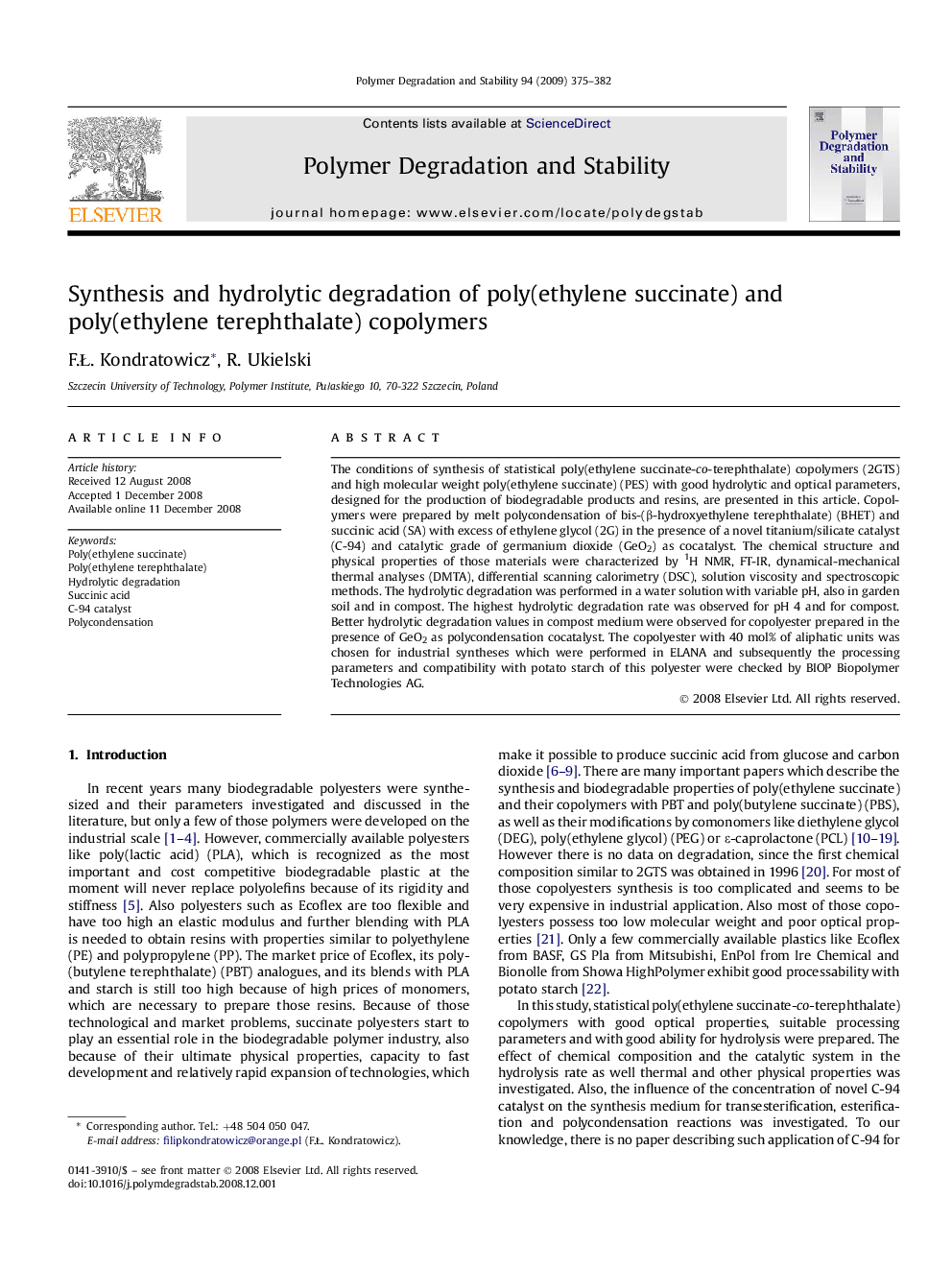| Article ID | Journal | Published Year | Pages | File Type |
|---|---|---|---|---|
| 5203620 | Polymer Degradation and Stability | 2009 | 8 Pages |
The conditions of synthesis of statistical poly(ethylene succinate-co-terephthalate) copolymers (2GTS) and high molecular weight poly(ethylene succinate) (PES) with good hydrolytic and optical parameters, designed for the production of biodegradable products and resins, are presented in this article. Copolymers were prepared by melt polycondensation of bis-(β-hydroxyethylene terephthalate) (BHET) and succinic acid (SA) with excess of ethylene glycol (2G) in the presence of a novel titanium/silicate catalyst (C-94) and catalytic grade of germanium dioxide (GeO2) as cocatalyst. The chemical structure and physical properties of those materials were characterized by 1H NMR, FT-IR, dynamical-mechanical thermal analyses (DMTA), differential scanning calorimetry (DSC), solution viscosity and spectroscopic methods. The hydrolytic degradation was performed in a water solution with variable pH, also in garden soil and in compost. The highest hydrolytic degradation rate was observed for pH 4 and for compost. Better hydrolytic degradation values in compost medium were observed for copolyester prepared in the presence of GeO2 as polycondensation cocatalyst. The copolyester with 40 mol% of aliphatic units was chosen for industrial syntheses which were performed in ELANA and subsequently the processing parameters and compatibility with potato starch of this polyester were checked by BIOP Biopolymer Technologies AG.
